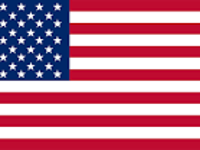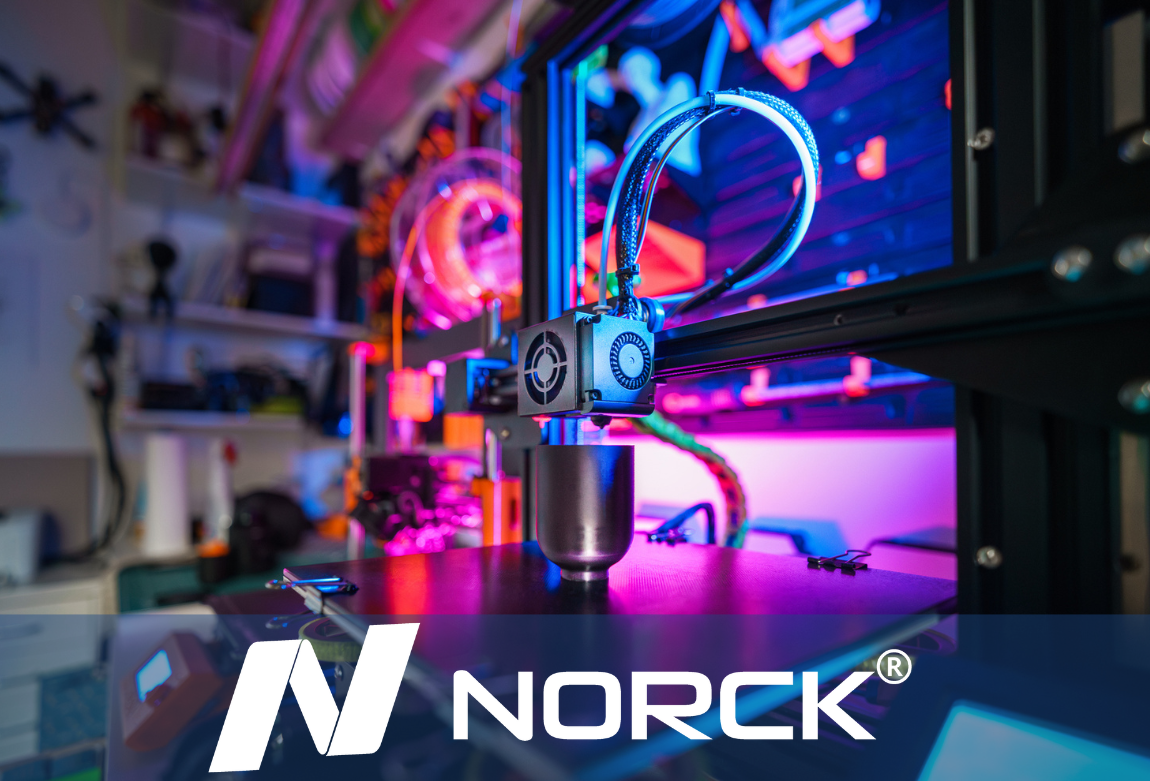Norck's Advanced 3D Printing Solutions
In modern manufacturing, 3D printing is a beacon of innovation, promising to redefine how we conceive, design, and produce objects. This revolutionary technology, additive manufacturing, has transcended its initial role as a prototyping tool to become a disruptive force across industries. Norck, a trailblazer in additive manufacturing solutions, is at the forefront of this transformative journey, pushing the boundaries of what is possible with cutting-edge technology and unwavering dedication to excellence.
This discourse embarks on a comprehensive exploration of 3D printing and Norck capabilities, unraveling the intricacies of this transformative technology and delving into the innovative advancements pioneered by Norck. From understanding the fundamental principles of 3D printing to dissecting Norck technological marvels, we will embark on a journey through healthcare, aerospace, automotive, architecture, and beyond, witnessing the impact of additive manufacturing on diverse industry verticals.
Understanding 3D Printing
3D printing, often called additive manufacturing, is a new method for layering computer designs into three-dimensional items. 3D printing adds the material progressively instead of traditional subtractive manufacturing techniques, which entail cutting material from a solid block. It allows for unprecedented production process flexibility and precision.
Using computer-aided design (CAD) software, a digital 3D model of the intended thing is created at the start. The blueprint for the physical product that will be made is this digital model. Slicing software is used to divide the digital model into thin horizontal layers. Every layer represents a cross-section of the finished product.
Layer by layer, the object is constructed by the 3D printer by interpreting the sliced layers. It is accomplished by depositing material in line with the design criteria, such as resin, metal, or plastic. Many methods, such as stereolithography (SLA), selective laser sintering (SLS), and fused deposition modeling (FDM), are employed by different kinds of 3D printers.
After printing, the item could go through post-processing procedures like surface finishing, sanding, or cleaning to enhance its look and performance. Traditional manufacturing methods cannot create complicated geometries and elaborate designs like 3D printing. Prototypes can be made swiftly and affordably with 3D printing, allowing for quicker design iteration and improvement.
Mass customization is made possible by 3D printing, as each item can be customized to a person's exact needs without requiring a substantial price increase. In contrast to subtractive manufacturing methods, 3D printing produces very little waste because it just uses the materials needed to create the thing.
3D printing could transform aerospace, automotive, healthcare, and consumer goods industries by providing unprecedented flexibility, efficiency, and innovation in production processes.
Get a Quote
Norck Technological Advancements
Norck, a pioneer in additive manufacturing, has led a succession of technological advances that are changing production. Norck has revolutionized industries globally with its constant pursuit of innovation and additive manufacturing technology advancements.
Advanced printing is one of Norck's most significant technological advances. Norck has developed patented printing processes using cutting-edge additive manufacturing technology for unmatched quality, speed, and scalability. Norck uses cutting-edge multi-jet fusion, laser sintering, and vat polymerization to generate complicated shapes with remarkable detail and accuracy, expanding design and manufacturing options.
Precision engineering has improved with the Norck printing processes. Norck has optimized its manufacturing processes to achieve remarkable precision and consistency using modern sensors, robotics, and machine learning algorithms. Precision engineering at Norck ensures that each product meets the highest quality standards with slight variance, whether making aeronautical components or high-performance medical equipment.
Norck has also invested substantially in material innovation, adding innovative polymers, metals, ceramics, and composites to its portfolio. Norck has produced proprietary materials with improved mechanical qualities, thermal stability, and biocompatibility by working with premier material scientists and using its in-house R&D. These new materials enable the fabrication of high-performance components that outperform typical manufacturing materials in strength, durability, and functionality, expanding additive manufacturing applications.
Norck additive manufacturing innovations are changing product design, prototyping, and manufacturing. Norck leads toward a more agile, efficient, and sustainable manufacturing future by pushing innovation and pursuing excellence.
Applications of 3D Printing in Various Industries
Additive manufacturing, or 3D printing, has evolved from its beginnings as a tool for prototyping to become a disruptive force in a wide range of businesses. Its adaptability, affordability, and capacity to create intricate geometries have sparked creative thinking and revolutionized conventional manufacturing techniques. Here's a look at some of the many industries that 3D printing is being used in:
3D printing in the healthcare industry is transforming both the production of medical devices and patient care. Precisely adapted to each patient's anatomy, custom implants, prostheses, and surgical guides can enhance treatment results and shorten recovery periods. Tissue engineering and organ transplantation may benefit from bioprinting, a specialized type of 3D printing that gives patients in need of organ replacement hope.
3D printing is boosting productivity and performance in the automotive and aerospace industries. Aerospace industries are using 3D printing to create sophisticated, lightweight parts for aircraft and spacecraft that improve aerodynamic performance and consume less fuel. Rapid prototyping, tooling, and end-use part production are all done in the automobile industry using 3D printing, which allows for customization and shortens the time it takes to market new car models.
3D printing is pushing the limits of design and building in architecture and construction. Large-scale 3D printers can produce entire buildings and structures from composite, plastic, or concrete, saving money and the environment. Using 3D printing, designers and architects produce incredibly complex and detailed models, prototypes, and architectural parts.
3D printing makes mass customization and product personalization possible in consumer gadgets and goods. Businesses can create products customized to each customer's needs and preferences on demand. Custom jewelry designs and personalized smartphone cases are just two examples of how 3D printing enables customers to show their uniqueness and ingenuity.
Norck Impact on Industry Verticals
Norck cutting-edge additive manufacturing technology and inventive solutions have transformed production processes, driven innovation, and opened new doors across industries. How has Norck changed critical sectors?
Norck transformed healthcare. Norck uses additive manufacturing to create patient-specific implants, prosthetics, and medical devices with remarkable precision and customization. These innovations have transformed surgical methods, lowering recuperation times and improving patient outcomes globally.
Norck knowledge has also helped the aircraft sector. Norck has produced lightweight, complex aviation and spaceship components using sophisticated printing and high-performance materials. These components improve aeronautical engineering and space exploration with their strength-to-weight ratios, fuel efficiency, and durability.
Norck also made significant automotive contributions. Automotive producers can quickly develop new car designs, optimize performance, and streamline production with additive manufacturing. Precision engineering at Norck has allowed the creation of unique parts and components, improving vehicle performance and driving automotive innovation.
Norck revolutionized architecture and buildings. Norck has made complicated constructions and buildings faster and more efficient using large-scale 3D printing. These advances have decreased construction costs and allowed architects and designers to push creativity and sustainability in architectural design.
Get a Quote
Challenges and Prospects
3D printing technology and Norck's talents must overcome various difficulties to realize its transformative potential. These include technical, regulatory, and sustainability issues.
One of the biggest obstacles to 3D printing is more material selection. New additive manufacturing materials have improved, but robust, more durable, and biocompatible ones are needed to increase applications.
A major obstacle to mainstream 3D printing adoption is its speed. Additive manufacturing allows complete design freedom and customization, but printing large or complex objects takes time. Printing speed and throughput must improve to maximize 3D printing in industrial manufacturing.
Regulatory issues in highly regulated areas like healthcare and aerospace hinder 3D printing adoption. Sustainability becomes more crucial as additive manufacturing grows. For 3D printing to be sustainable, its energy, waste, and non-renewable resource use must be addressed.
Future possibilities for 3D printing and Norck capabilities are bright. Innovation in materials research, printing technology, and process optimization will extend additive manufacturing applications. Additionally, continued research and development to address technical obstacles and regulatory restrictions will enable industry-wide 3D printing adoption.
As the technology improves and becomes more affordable, 3D printing will be integrated into production operations to improve efficiency, flexibility, and sustainability. In the future, 3D printing could transform production, spur innovation, and boost economic growth.
Conclusion
In conclusion, the fusion of 3D printing technology and Norck's pioneering capabilities has ushered in a new manufacturing era marked by unprecedented innovation and efficiency. From revolutionizing healthcare with personalized medical solutions to propelling aerospace exploration through lightweight, high-performance components, the impact of additive manufacturing is profound and far-reaching.
As we reflect on the transformative journey we've embarked upon, it's evident that the possibilities presented by 3D printing and Norck's expertise are limitless. With ongoing advancements in materials science, printing techniques, and process optimization, the future of additive manufacturing holds even more tremendous promise.
As Norck continues to push the boundaries of additive manufacturing, we can look forward to a future where customization, sustainability, and efficiency converge to reshape industries and unlock new realms of possibility. Together, let us embrace the transformative power of 3D printing and Norck's visionary approach as we embark on a journey toward a more agile, innovative, and sustainable future for manufacturing.


 English
English